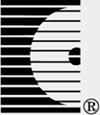全双工收发器自干扰消除的混合量子经典机器学习方法
IF 3.7
3区 计算机科学
Q2 TELECOMMUNICATIONS
引用次数: 0
摘要
这封信提出了一种混合量子经典机器学习(ML)方法,用于全双工收发器的自干扰消除(SIC)。提出的方法利用量子长短期记忆(QLSTM)层与经典卷积层集成来执行非线性SIC。QLSTM用变分量子电路取代经典LSTM门中的神经网络,作为特征提取器。仿真结果证实了所提出的混合量子经典机器学习方法的优越性,在相同的内存和计算要求下,它比完全经典的机器学习方法实现了更高的SIC性能。本文章由计算机程序翻译,如有差异,请以英文原文为准。
A Hybrid Quantum-Classical Machine Learning Approach for Self-Interference Cancellation in Full-Duplex Transceivers
This letter proposes a hybrid quantum-classical machine learning (ML) approach for self-interference cancellation (SIC) in full-duplex transceivers. The proposed approach exploits a quantum long short-term memory (QLSTM) layer, integrated with a classical convolutional layer, to perform the non-linear SIC. QLSTM replaces the neural networks in the classical LSTM gates with variational quantum circuits, acting as feature extractors. Simulation results confirm the superiority of the proposed hybrid quantum-classical ML approach by achieving a significantly higher SIC performance than its fully classical counterpart at similar memory and computational requirements.
求助全文
通过发布文献求助,成功后即可免费获取论文全文。
去求助
来源期刊

IEEE Communications Letters
工程技术-电信学
CiteScore
8.10
自引率
7.30%
发文量
590
审稿时长
2.8 months
期刊介绍:
The IEEE Communications Letters publishes short papers in a rapid publication cycle on advances in the state-of-the-art of communication over different media and channels including wire, underground, waveguide, optical fiber, and storage channels. Both theoretical contributions (including new techniques, concepts, and analyses) and practical contributions (including system experiments and prototypes, and new applications) are encouraged. This journal focuses on the physical layer and the link layer of communication systems.
 求助内容:
求助内容: 应助结果提醒方式:
应助结果提醒方式:


